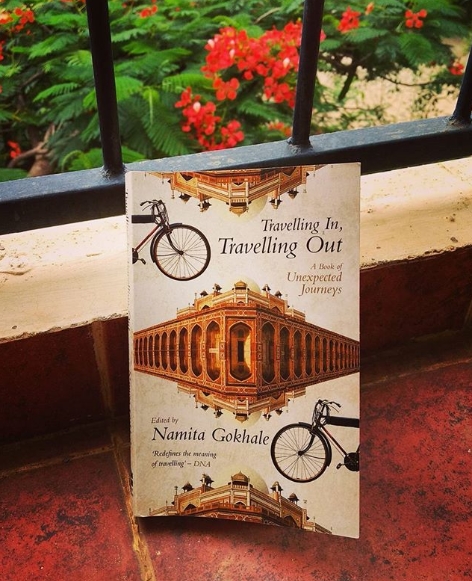edited by Namita Gokhale
I haven’t read a travel book in a while, and there couldn’t have been a better book to welcome me back into the genre. I think it was the mention of Mishi Saran, whose Chasing The Monk’s Shadow I really liked, that made me aware of this book.
What I loved about the book is its exploration of what travel could mean. That takes the book far beyond the standard travelogue writing. Journeys can be of different kinds – the simple physical movement from one place to another, to the exploration of the self within, “thought to thought”, to seeing things in a different light and so on. This book has all that, and more.
Devdutt Pattanaik sets the tone well with the exploration of the idea of travel seen through the lens of Hindu mythology and civilisation and brings up the concept of parikrama – returning to the point from where we started. Ashok Ferrey throws in a fantastic light touch immediately after that – fortunes changing with time. This humour finds a neat continuation in Marie Brenner’s take on holy India for the 5 star set. The tinge of cynicism is given full throttle in Mayank Austen Soofi’s time travel in Nainital, but balanced beautifully with nostalgia and wistfulness.
Bulbul Sharma’s journey to the hills is as much a journey within, and it talks of a place that almost stands still in time. This theme resonates in the detailing of Nobgang by Bhutan’s Queen Mother. A darker turn of places where light does not enter is Ipsita Roy Chakraverti’s exploration of the haunted fort of Bhangarh, and her writing forces one to acknowledge the limited understanding of forces unseen. Both MJ Akbar and Rahul Pandita throw light on yet another nuance of places in India that have remained outside of time, and people who continue to be exploited.
Mishi Saran’s “A House for Mr.Tata” is a poignant tale of a place changing even as its memories remain firm in the minds of those who inhabited it. The closure missing in this is exactly what happens in Urvashi Butalia’s partition based “The Persistence of Memory”. Indeed, some journeys are for exploration, and some others, for closure.
Aveek Sen and Advaita Kala bring out nuances of contemporary travel, while faith is the key theme in the writings of Kota Neelima, Saba Naqvi and Navtej Sarna. The last one was specially enlightening as it mentions a Travancore Wing in a building in Jerusalem! And yes, I could not but think of the Malayali teashop joke as Lipton was being served to close this story!
Aakar’s Patel’s Bombay story is about the city changing his perceptions, while Jerry Pinto writes about the changing nature of Dharavi. A flip of sorts. Ali Sethi’s sensitive take on Pakistanis in Copenhagen brings out an important concept in today’s geo politics, even while exploring the idea of home and country. The armchair travels of Namita Gokhale across the Himalayas, Nisha Susan’s exploration of Gond art, Aman Nath’s insightful perspectives on beauty in India, the evolution of cartography in Manosi Lahiri’s Maps For All Times all find a place in the book. A special mention for Wendell Rodricks’ “Trailing the Tongue”- a fantastic piece on language, taste and nuances of how language and culture evolve over time.
Read, and let your mind travel.


One thought on “Travelling In, Travelling Out”